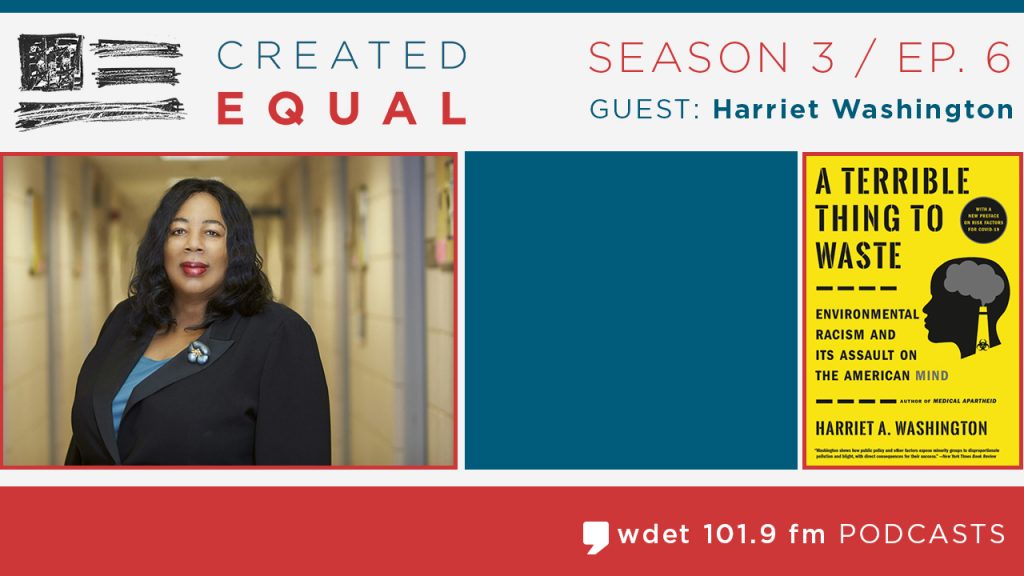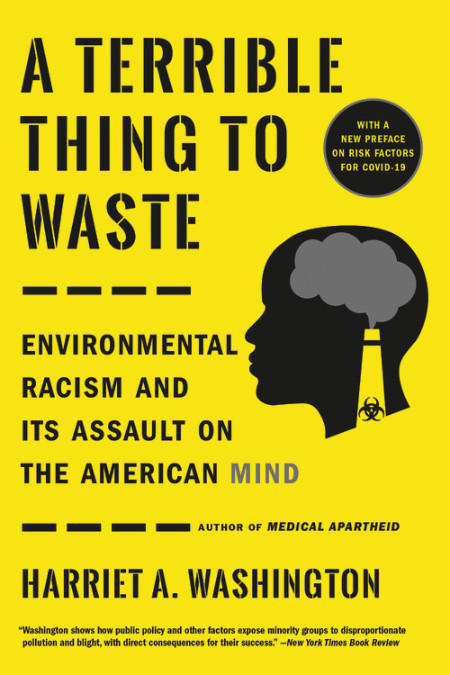Created Equal: Harriet Washington Unpacks Environmental Racism
Medical ethicist and award-winning author Harriet A. Washington explains how race is a much larger risk factor than poverty when it comes to exposure to environmental hazards.

Season Three of the podcast Created Equal explores “Writers on Race: From Ralph Ellison to Colson Whitehead,” and features some of the most important voices in literature as well as the national conversation on racial inequities.
The conversations were conducted on the radio program, Detroit Today, in the WDET studios on Wayne State University’s campus throughout the pandemic and civil unrest of 2020. Each episode consists of a conversation between Henderson and one writer exploring the role of their work in the conversation about race in America.
Subscribe to the Podcast
Apple Podcast – Spotify – Google Podcast – NPR One
Episode 6 Guest: Harriet A. Washington
Harriet A. Washington is an award-winning author and medical ethicist. Her book “A Terrible Thing to Waste: Environmental Racism and Its Assault on the American Mind” outlines the racial disparities in exposure rates to environmental hazards and the impact those toxins have on health outcomes and brain development.
Washington defines environmental racism as, “the disproportionate exposure of people of color to toxic environmental agents.”
Discussion Points:
Racial faultlines in exposure to environmental hazards:
“Exposure to (environmental hazards) is racial; it falls neatly along racial faultlines. That’s probably the more confusing aspect to some people because a lot of the news media, even some of the medical media, will cast these risks as socioeconomic, implying that they fall along economic faultlines, but that’s not so. Poverty is a risk factor, race is a much, much stronger one.”
The data supports that race is a larger contributing factor to exposure to environmental toxins than poverty:
“If you look at people who have very high exposure to environmental toxins, you find that African Americans who are solidly middle class, with an income of $50,000-$60,000 a year, have much greater exposure than extremely poor white Americans who only earn $10,000 a year… So clearly, it’s not that poverty isn’t a risk factor, but race is such a large risk factor that it completely overshadows it.”
On the reluctancy to acknowledge environmental racism:
“The reluctance to face the fact that we’re looking at racial faultlines has a lot to do with the reluctance to face the fact of racism at all in American life. It’s, frankly, a difficult thing to admit that your country has these ugly disparities… that people’s life expectancies are stratified by race. That’s a hard thing to admit, but it’s reality and we have to face it if we want to change it.
Created Equal Season 3 is supported by the Michigan School of Psychology

Trusted, accurate, up-to-date
WDET is here to keep you informed on essential information, news and resources related to COVID-19.
This is a stressful, insecure time for many. So it’s more important than ever for you, our listeners and readers, who are able to donate to keep supporting WDET’s mission. Please make a gift today.

